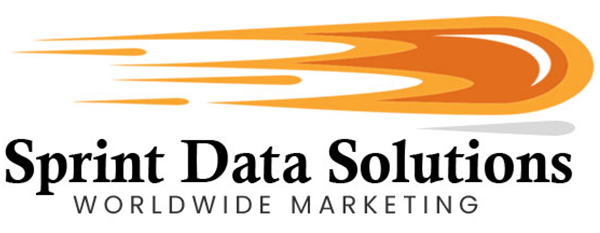Trike Owners Are A New & Growing Market
The United States, in the broader sweep of global history, is a relatively young nation. Yet, it is precisely this youthful standing that allowed America to grow in tandem with the industrial and technological revolutions that shaped the modern era. One of the most striking manifestations of this synchronization is the vast and intricately designed network of roads and highways that span the continent. These thoroughfares not only support daily commutes and commercial logistics but also grant citizens the freedom to embark on cross-country journeys, making road travel an integral part of the American experience.
Among the many forms of personal transportation that have emerged from this infrastructure, the motorcycle stands as a lasting symbol of independence and adventure—a vehicle that evokes the spirit of the open road. Now, after decades of cultural and practical relevance, the motorcycle has been joined by a unique and increasingly popular alternative: the trike motorcycle. With three wheels offering greater stability and comfort, trikes are capturing the interest of new riders, including older adults and individuals seeking safer touring experiences. This shift has created exciting opportunities for companies ready to embrace a niche yet rapidly expanding market. Recognizing the potential, Sprint Data Solutions Worldwide Marketing has proactively positioned itself at the forefront of this evolution. By leveraging advanced data-driven strategies, the company enables businesses to target and engage this emerging demographic with precision, helping clients connect with trike enthusiasts and convert them into loyal customers.

What Is A Trike Motorcycle?
A trike motorcycle, as the name suggests, operates on a similar fundamental principle as traditional two-wheeled motorcycles but distinguishes itself with a three-wheel configuration. These vehicles may feature two wheels in the front and one in the rear or the more common reverse layout of one front wheel and two rear wheels, depending on the design philosophy of the manufacturer or the personal preference of the rider. The idea of a three-wheeled, motorized personal transport vehicle is not a modern innovation. In fact, motorized tricycles date back to the 19th century—a time marked by intense experimentation with early automotive configurations before the industry standardized on the more familiar two- and four-wheeled layouts. Trike motorcycles experienced a renaissance in the early 2000s, particularly among motorcycle enthusiasts who began modifying their two-wheeled bikes into three-wheeled versions. These custom conversions offered enhanced stability and comfort, particularly for aging riders or those with mobility concerns, without compromising the open-air, road-hugging experience that motorcycles provide. The trend gained enough momentum that in 2009, Harley-Davidson—a longstanding icon in the motorcycle world—responded with the launch of its own factory-built trike model, signaling a shift in industry attitudes. This legitimization by a major manufacturer sparked broader interest, prompting other motorcycle and vehicle brands to explore or expand their own offerings in the trike category. Today, while conventional motorcycles continue to dominate the roads, the trike segment is steadily growing, appealing to a diverse array of riders seeking the thrill of a motorcycle with the added benefits of stability, comfort, and distinctive design.
The Trike Difference
Trikes, or three-wheeled motorcycles, were not designed with aesthetics or fashion as their primary goal. Instead, the core reason behind the inclusion of a third wheel is enhanced stability. Unlike traditional two-wheeled motorcycles that require riders to actively maintain balance, trikes stay upright on their own, much like a car. This mechanical stability eliminates the physical effort typically required to control a motorcycle’s balance, making them a far more accessible option for a broader range of riders. This configuration is particularly beneficial during slow-speed maneuvering or when the vehicle is at rest, where two-wheeled motorcycles are most vulnerable to tipping.
Originally, trikes found their way into the market as custom modifications by independent builders and niche businesses. These small-scale innovators were often responding to the needs of a specific demographic—motorcycle enthusiasts who were aging or had suffered injuries that impacted their mobility. These riders still had a strong passion for the freedom and exhilaration of open-air travel but found traditional motorcycles too demanding physically. The trike presented a practical solution, allowing them to continue enjoying the ride without the need for physical agility or balance. Additionally, new riders who were drawn to the thrill of motorcycle-style vehicles but hesitant to tackle the steep learning curve of balancing on two wheels found trikes to be a gentler introduction to the lifestyle.
As demand increased, major motorcycle manufacturers began to take notice. Industry giants like Harley-Davidson recognized that trikes weren’t just a niche solution for disabled or elderly riders—they were opening up motorcycling to entirely new audiences. Riders who may have previously dismissed motorcycles as too risky or intimidating were now entering the scene through the gateway of trike riding. This growing market appeal prompted larger companies to launch their own factory-built trikes, expanding their customer base while also retaining loyal aging riders who might otherwise have exited the motorcycle world.
In recent years, the trike segment has diversified even further with the introduction of hybrid designs like the Polaris Slingshot. These modern three-wheelers offer side-by-side seating and a steering wheel, combining the feel of a convertible sports car with the classification and spirit of a motorcycle. Though they lack the traditional motorcycle frame and seating, these vehicles still fall under motorcycle regulatory categories in many regions, allowing them to attract riders looking for a unique blend of safety, comfort, and thrill. The evolution of the trike represents not just an adaptation to physical needs but a reimagining of what motorcycle culture can include—welcoming riders of all kinds with a design rooted in accessibility, safety, and inclusivity.
Who Is The Market?
The demographic that embraces trikes often overlaps significantly with those who ride traditional motorcycles—typically individuals who enjoy the freedom of the open road, the thrill of riding, and the community that comes with it. However, the trike market is evolving beyond just this core group. Increasingly, trikes are attracting new users, including older riders who may find the added stability and comfort of three wheels more appealing, as well as those with mobility issues or balance concerns that make motorcycles less accessible. Additionally, younger riders and even eco-conscious consumers are beginning to explore electric trike options, broadening the market further. This growing diversity signals that trikes are no longer just an alternative to motorcycles, but a distinct and expanding segment in personal transportation. Chief among trike users are:
Elderly Riders
Trikes originally found their niche among motorcycle enthusiasts seeking greater stability and comfort, and this segment remains robust today. As motorcycles have long been ingrained in American culture, many older adults—who once embraced two-wheeled machines in their youth—continue to feel a deep connection to the open-road lifestyle. However, the natural effects of aging, such as reduced balance, strength, or reflexes, can make riding traditional motorcycles challenging or unsafe. Trikes address these concerns by eliminating the need for balance and complex counter-steering, offering a safer yet equally exhilarating alternative. This adaptation allows aging riders to maintain their passion for the freedom and adventure of motorcycling without compromising their safety. As a result, a growing demographic of senior riders is fueling an expanding market not only for trikes themselves but also for tailored gear, comfort upgrades, riding clubs, and travel services that cater specifically to their unique needs and preferences. This shift presents valuable opportunities for innovation and business development aimed at this vibrant and loyal community.

Disabled Riders
For individuals with disabilities, certain conditions can render driving a traditional car impractical—blindness being a prime example. However, for many others, including wheelchair users, amputees with a single missing limb, or those with various mobility impairments, driving remains a very real possibility with some adjustments. While motorcycles are often too physically demanding even for fully able-bodied individuals due to their need for balance, coordination, and strength, motor trikes present a much more accessible alternative. These three-wheeled vehicles retain the open-air experience and thrill of motorcycling while dramatically reducing the physical demands required to operate them.
One of the most compelling advantages of trikes for people with disabilities is their inherent stability. Unlike traditional motorcycles, trikes do not require the rider to maintain balance while stopped or turning, making them especially accommodating for individuals with paralysis or balance issues. Additionally, many trikes can be heavily customized to meet individual needs. For example, hand-operated controls can replace foot pedals, allowing riders to shift gears, brake, and accelerate entirely from the handlebars. Advanced designs even include automatic transmissions, thumb throttles, or electronic braking systems, further easing the control demands. These modifications open up a world of freedom and mobility, enabling people with disabilities to enjoy the independence, excitement, and lifestyle associated with motorcycle riding—something that might otherwise be out of reach. Trikes, therefore, represent not just a mode of transportation, but a pathway to inclusion and empowerment through mobility.
People Who Don’t Like Motorcycles
A notable development in the motor trike market is the rise of a new and unconventional segment of riders—individuals who likely never would have considered motorcycle ownership if only traditional two-wheeled options existed. Unlike standard motorcycles, which require a high level of balance, physical coordination, and carry significant perceived risk, motor trikes offer a compelling alternative by combining increased safety, enhanced stability, and user-friendly operation. This appeal has been further expanded by models that incorporate car-like features such as bucket seats, protective roofs, and even steering wheels, giving the feel of a compact, three-wheeled convertible. These models often only require a motorcycle license, providing a legal and practical bridge between the worlds of cars and bikes. As a result, the rider demographic has broadened considerably, now including older adults, first-time vehicle owners, and even individuals with mobility limitations who previously found motorcycles inaccessible. This diversification opens up a wealth of new marketing opportunities. Businesses catering to lifestyle, recreation, and mobility can now target a richer, more varied audience. Sprint Data Solutions Worldwide Marketing is uniquely positioned to support these efforts, offering refined data targeting and campaign strategies that help brands reach these emerging segments effectively and efficiently. Whether it’s luxury models aimed at retirees or accessible options for urban commuters, precise marketing is key—and that’s exactly where Sprint Data Solutions excels.
Who Is Sprint Data Solutions Worldwide Marketing?
Sprint Data Solutions Worldwide Marketing is a proudly American-owned and operated enterprise, founded through the determination and entrepreneurial spirit of a disabled veteran. Upon completing military service and returning to civilian life, the company’s founder shifted focus from national defense to economic development—specifically by empowering American businesses to grow their customer and client bases. This transition marked the beginning of a new mission: to support economic vitality through data-driven marketing solutions.
The company was launched in its founder’s hometown of Las Vegas, Nevada, initially serving local enterprises seeking to expand their reach. With an unwavering commitment to exceptional service and high-quality results, Sprint Data Solutions rapidly built a reputation for delivering value. Over time, this dedication translated into consistent growth and a solid foundation of marketing expertise. Today, the company is proud to include a team with more than 50 years of combined experience across various sectors of the marketing industry.
Sprint Data Solutions entered the marketing landscape during a pivotal era—when digital marketing was still emerging and largely overshadowed by traditional media channels such as television, print, and radio. The company’s original emphasis on direct mail campaigns not only proved effective but also fostered critical competencies in database building, data management, and analytics. These skillsets later became essential as the marketing landscape evolved. When digital marketing gained traction, Sprint Data Solutions was already equipped with the tools and knowledge to thrive, positioning the company as a trusted early adopter and strategic partner for clients adapting to the digital age.
The company’s success in its early operations sparked an ongoing expansion of its service footprint. What began as a Nevada-only operation soon grew to encompass the entire United States, including Alaska and Hawaii. From there, Sprint Data Solutions extended its reach across North America, entering the Canadian and Mexican markets. In recent years, the company has expanded even further, crossing into international territory with marketing services available in the European Union—including major economies such as France. Today, Sprint Data Solutions Worldwide Marketing offers a full spectrum of integrated marketing services designed to help businesses of all sizes connect with new customers, generate leads, and scale their success both domestically and globally.

How We Can Help
Sprint Data Solutions Worldwide Marketing has dedicated years to meticulously building and refining an expansive and high-quality database of consumer and business contact information. This database isn’t merely a static list of names—it is the result of continuous investment in ethical data acquisition practices and the formation of strategic partnerships with respected third-party data providers across the nation. Information is collected exclusively through compliant, permission-based channels such as opt-in email newsletters, subscription services, voluntary survey participation, and consent-based contributions like business card submissions at events. Each data point undergoes stringent validation to meet legal standards and ensure that individuals have given explicit permission for their information to be included and utilized.
Recognizing that data relevance is just as crucial as volume, Sprint Data Solutions places significant emphasis on ongoing data hygiene. Contacts are regularly verified and updated to account for life changes like relocations, career transitions, or natural attrition. This ensures that clients receive information that is not only accurate but also timely and actionable.
Beyond the raw data, Sprint leverages state-of-the-art artificial intelligence and advanced machine learning algorithms to deliver unparalleled data intelligence. These systems do far more than just compile contact lists—they perform complex analytics to identify patterns, enrich profiles with behavioral insights, and categorize entries according to highly specific client-defined criteria. This enables the delivery of hyper-targeted datasets tailored to marketing goals, sales outreach, or strategic planning. Clients receive refined, purpose-built contact segments that are ready for deployment, significantly reducing the time and resources required for prospecting and dramatically increasing campaign effectiveness. Through this integrated approach, Sprint Data Solutions delivers not just data—but decisive, data-driven solutions.
An essential feature of modern contact databases is their robust geographic targeting capability, which allows for a high degree of precision in campaign outreach. Marketers can launch broad, nationwide campaigns or scale down efforts to focus on specific regions, such as the Pacific Northwest. This regional targeting can be further refined to a single state like Oregon, and even down to hyper-local areas within cities—like the Pearl District in Portland—enabling campaigns that resonate deeply with local residents through culturally and community-relevant messaging. This geographical granularity supports businesses and organizations in tailoring their outreach to where their ideal customers live and operate, making location-based marketing far more effective.
Equally critical to the success of contact databases is the inclusion of detailed demographic data, which transforms raw contact lists into meaningful marketing assets. These databases do not just list names and addresses; they profile individuals based on a range of attributes that matter for targeting and segmentation. Demographic filters can include ethnicity—for instance, to reach Asian American communities more effectively—or religious affiliation, which can be especially relevant for products or services aligned with Catholic values or observances. Economic indicators allow targeting based on income tiers, whether the focus is on premium buyers or cost-conscious consumers. Moreover, demographic insights can extend to age brackets, family status, health conditions like asthma, or lifestyle choices, all of which contribute to personalized and responsive marketing strategies. By leveraging both geographic and demographic dimensions, marketers can craft highly customized campaigns that yield greater engagement, stronger conversion rates, and ultimately, a more significant return on investment.
Contact Formats & More
Sprint Data Solutions Worldwide Marketing offers a comprehensive suite of databases tailored to deliver contact information in the specific format that suits each client’s marketing strategy. Whether the focus is on direct mail, email marketing, telemarketing, or SMS campaigns, we provide robust data solutions that bridge businesses with their desired audiences. For physical direct mail initiatives, we supply verified mailing addresses segmented by both general consumers and business targets. Our email address listings cover a wide spectrum, offering access to both personal and corporate accounts—perfect for digital outreach strategies. For clients emphasizing direct engagement, we provide telephone numbers that include residential contacts as well as curated B2B numbers that connect marketers directly to key decision-makers, bypassing general switchboards. Moreover, mobile phone numbers are readily available, ideal for personalized SMS or text-based promotional efforts that demand immediacy and engagement.
Beyond data, we recognize that executing a successful campaign often requires more than just accurate contacts. That’s why we also offer special, value-added services on request. One such service is our turnkey direct mail campaign management—a complete end-to-end solution for businesses that want professional results without the burden of managing multiple vendors. From the initial creative concept to print production and seamless distribution, Sprint Data Solutions streamlines the entire process under one trusted roof. This all-inclusive service is particularly beneficial for companies with limited experience in direct marketing but high expectations for impact and return on investment.
So, whether you’re targeting a niche like trike owners or planning a nationwide promotional effort, Sprint Data Solutions Worldwide Marketing provides the data and expertise to drive results. Reach out today to access the high-quality leads that can truly elevate your marketing success.






